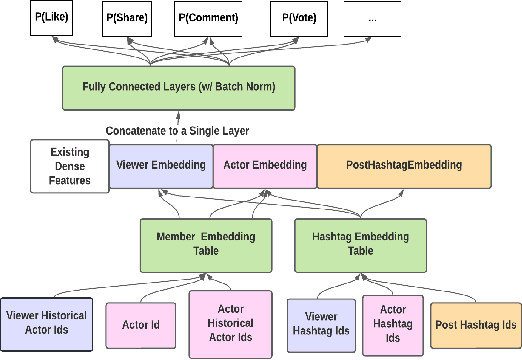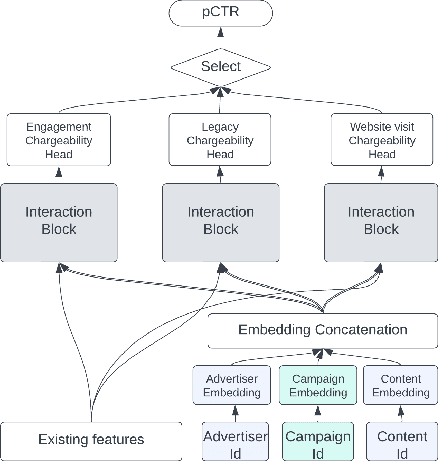Jonathan Hung
LiRank: Industrial Large Scale Ranking Models at LinkedIn
Feb 10, 2024



Abstract:We present LiRank, a large-scale ranking framework at LinkedIn that brings to production state-of-the-art modeling architectures and optimization methods. We unveil several modeling improvements, including Residual DCN, which adds attention and residual connections to the famous DCNv2 architecture. We share insights into combining and tuning SOTA architectures to create a unified model, including Dense Gating, Transformers and Residual DCN. We also propose novel techniques for calibration and describe how we productionalized deep learning based explore/exploit methods. To enable effective, production-grade serving of large ranking models, we detail how to train and compress models using quantization and vocabulary compression. We provide details about the deployment setup for large-scale use cases of Feed ranking, Jobs Recommendations, and Ads click-through rate (CTR) prediction. We summarize our learnings from various A/B tests by elucidating the most effective technical approaches. These ideas have contributed to relative metrics improvements across the board at LinkedIn: +0.5% member sessions in the Feed, +1.76% qualified job applications for Jobs search and recommendations, and +4.3% for Ads CTR. We hope this work can provide practical insights and solutions for practitioners interested in leveraging large-scale deep ranking systems.
TonY: An Orchestrator for Distributed Machine Learning Jobs
Mar 24, 2019
Abstract:Training machine learning (ML) models on large datasets requires considerable computing power. To speed up training, it is typical to distribute training across several machines, often with specialized hardware like GPUs or TPUs. Managing a distributed training job is complex and requires dealing with resource contention, distributed configurations, monitoring, and fault tolerance. In this paper, we describe TonY, an open-source orchestrator for distributed ML jobs built at LinkedIn to address these challenges.
 Add to Chrome
Add to Chrome Add to Firefox
Add to Firefox Add to Edge
Add to Edge